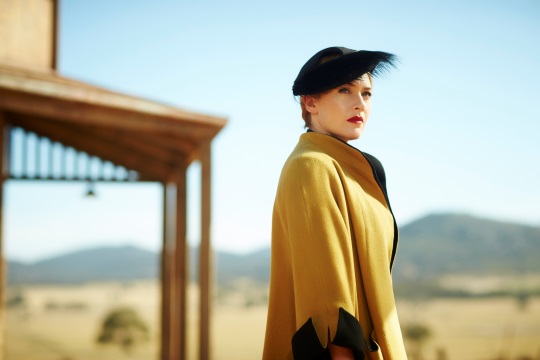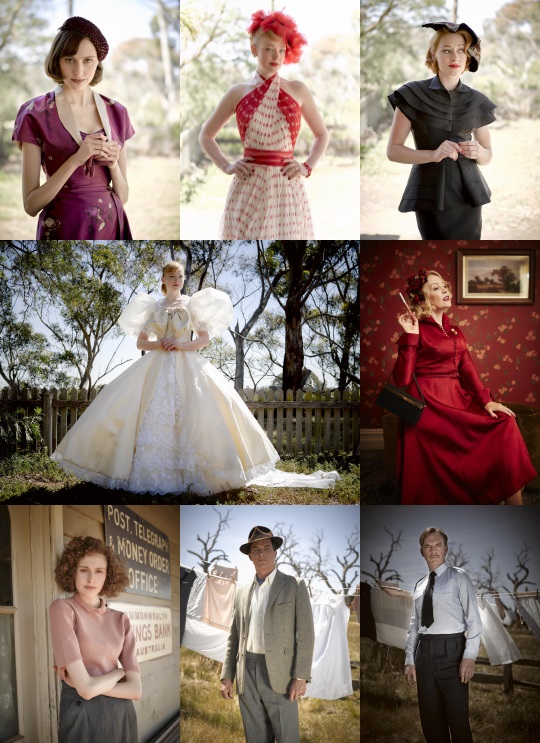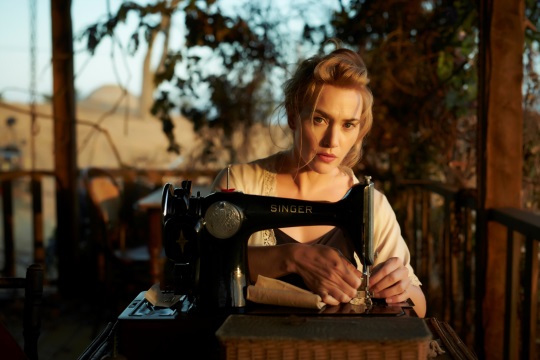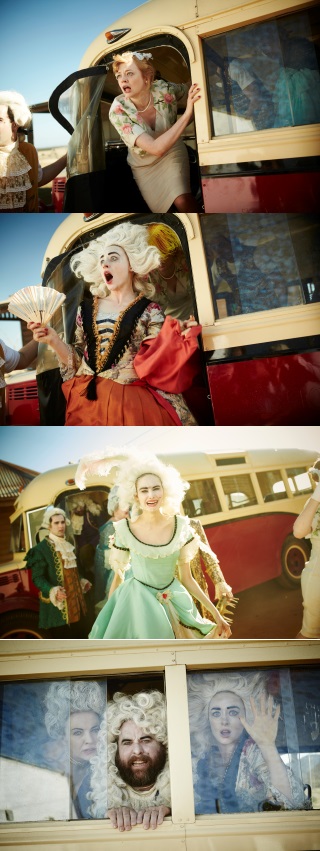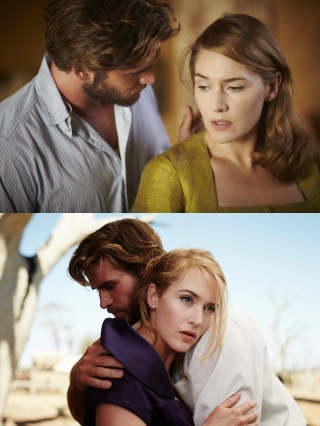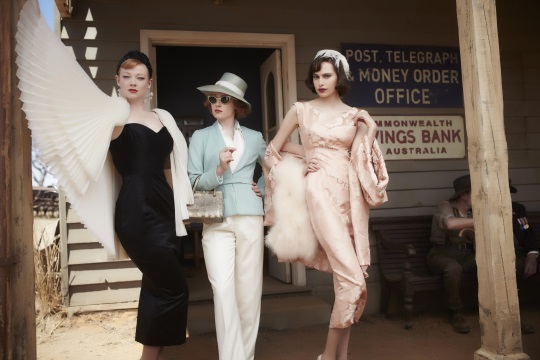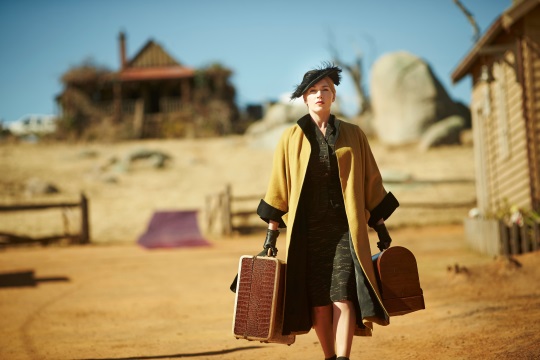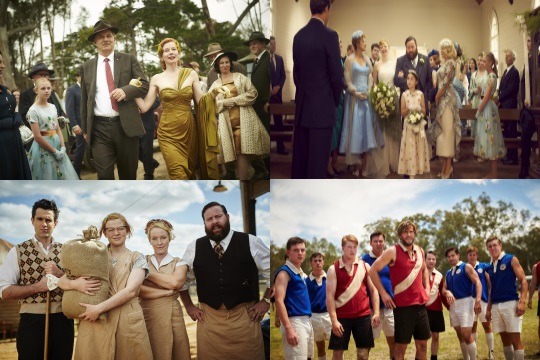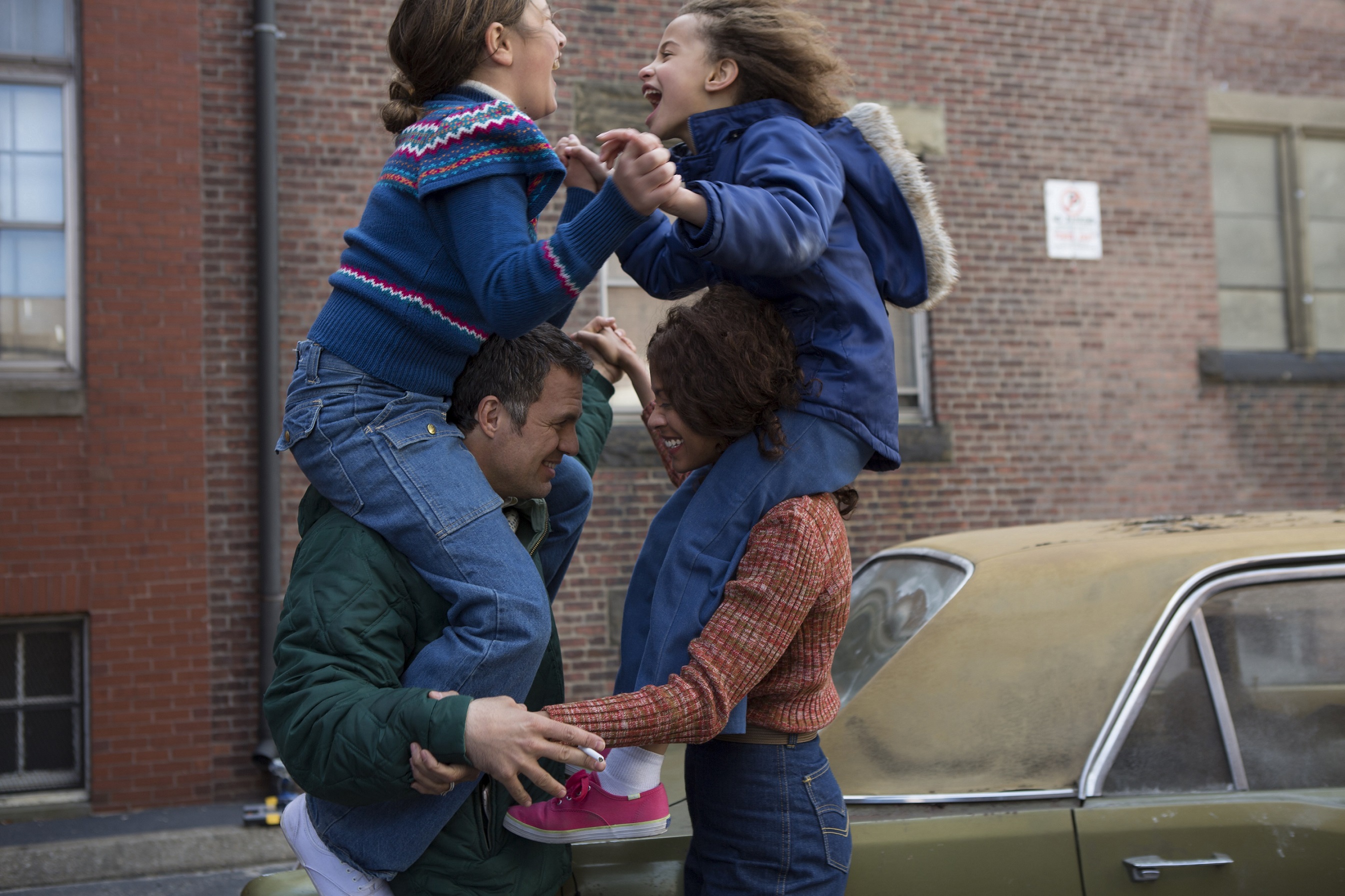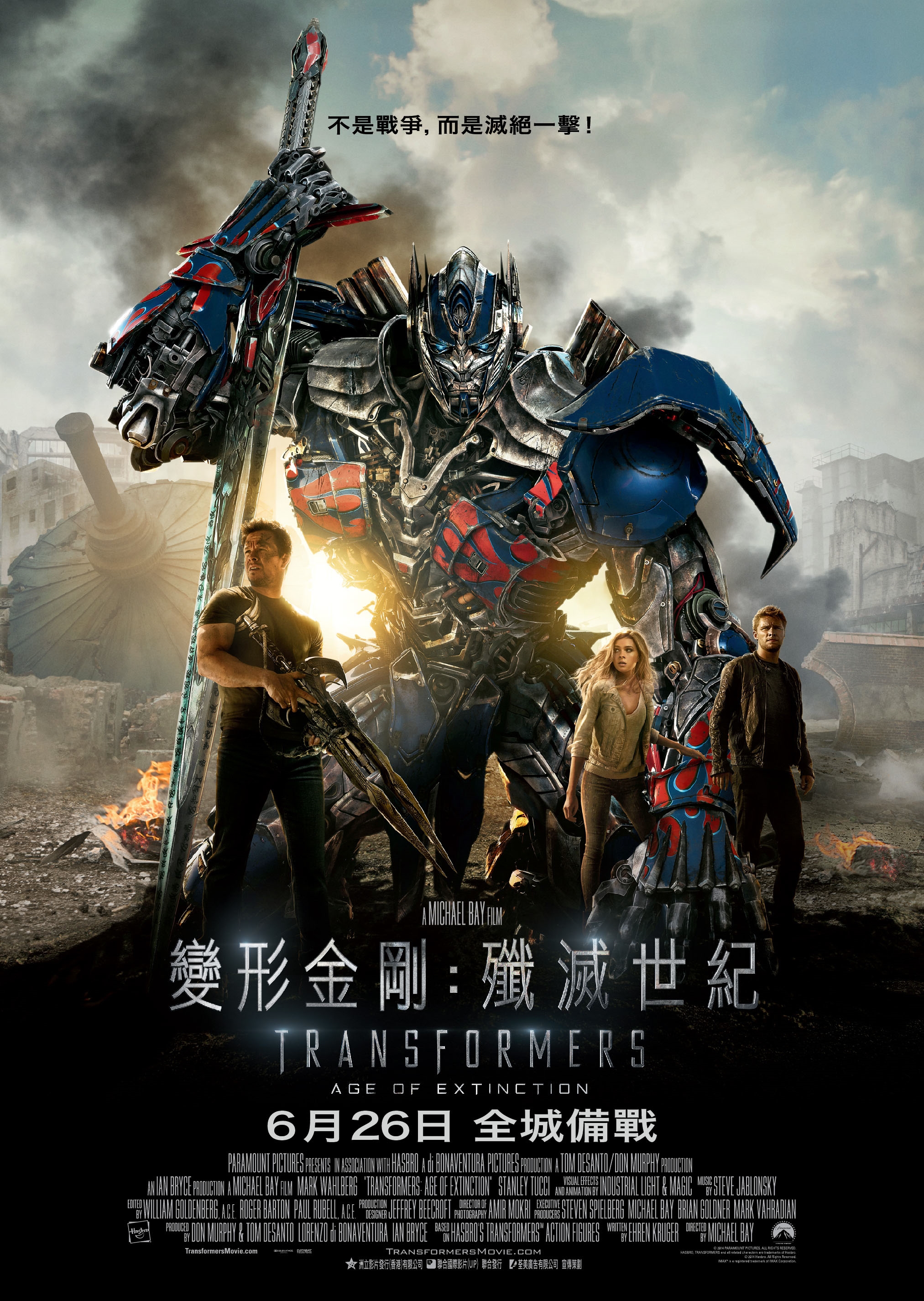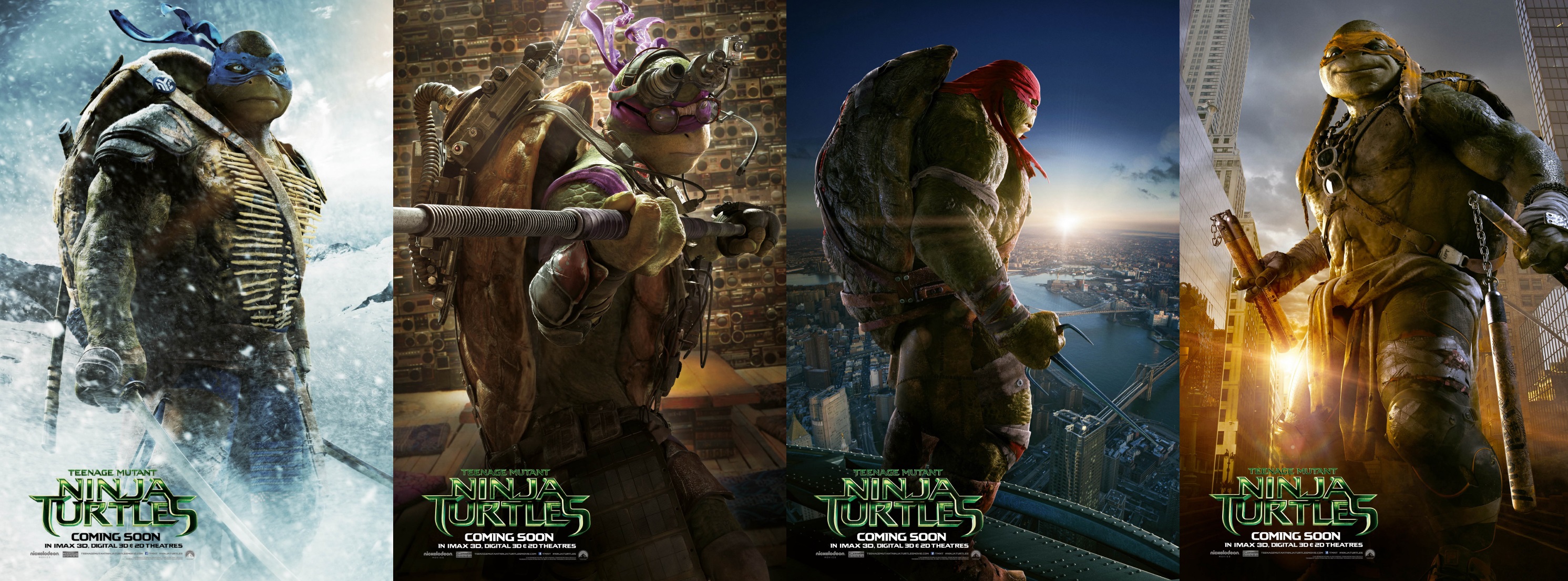The Dressmaker Romantic Sweet Revenge
”The Dressmaker”, directed by Jocelyn Moorhouse, produced by Sue Maslin, screenplay by Jocelyn Moorhouse & P.J. Hogan. It is based on the novel “The Dressmaker” by Rosalie Ham. Starring Kate Winslet, Judy Davis, Liam Hemsworth, Hugo Weaving, Caroline Goodall, Shane Bourne, Kerry Fox… The film has obtained 4 awards from Australian Film Critics Association, Best Actress, Supporting Actor and Best Screenplay; and also, Best Actress, supporting actress, supporting actor, and costume design, and my favorite movies won these five awards from the Academy of Australian, respectively.
From Novel to Film When The Dressmaker was published in the year 2000, producer SUE MASLIN saw the novel and recognized the name of the author, ROSALIE HAM. “I went to school with a Rosalie Ham - it turned out it was one in the same” Sue Maslin explains. “We both grew up in a little country town called Jerilderie, in the southern Riverina area of NSW, and we both were at boarding school in Melbourne which meant from a very early age catching a bus that took five and a half hours to travel up to Jerilderie and drop us off in the middle of the night to be picked up by our parents.” Sue Maslin read and loved the book because it encapsulated, without being nostalgic or sentimental, something raw and honest and funny and tragic about what it’s like to grow up in a little country town – “the kind of place where everybody knows everyone else’s business and you can tolerate the worst evil and the greatest of excesses amongst each other just as long as you are not an outsider.” The Dressmaker was Rosalie Ham’s first novel.
Rosalie Ham says: “I went to a writing course and they said ‘you’re going to write a novel, a practice novel, you probably won’t get this novel published because people don’t often get their first novel published’. And I thought, fine, well I’ll just put everything in. ‘Everything’ ended up being all the big themes - death, marriage, betrayal.” And so Tilly Dunnage, her mother Molly and the fictional town of Dungatar were born. The character of Tilly seems drawn, at least in part, from Rosalie’s mother. “My mother was one of the dressmakers in Jerilderie. She happened to be divorced, and so there was a certain amount of scandal that was attached to that. She had to make a living as a seamstress. And I saw the difference in her role as the seamstress as opposed to the other ladies who were in the hierarchy of the town that wanted beautiful frocks made by her. Having someone like Tilly return to the town as an inferior person but actually impossibly beautiful and superior, juxtaposed against the people of the town, that’s the point I wanted to make.”
The Story of Revenge Goddess Sue explains: “I needed somebody that could capture that edge between comedy and tragedy that’s so essential to the story, and the person that I kept going back to was Jocelyn Moorhouse, mostly on the basis of her beautiful, funny, sad film Proof which was the film that really announced her as the extraordinary director that she is. I flew to Los Angeles to meet Jocelyn and we had a really great conversation about it but she was not ready to make the film at that time.” However, as with many elements of this story, persistence was key.
Jocelyn Moorhouse recalls: “I suggested other people she could go to, but Sue wouldn’t take no for answer. She kept coming back to me every couple of months - ‘are you still too busy?’ - so I finally read the book, immediately fell in love with it and was completely obsessed with turning it into a movie.” Jocelyn came on board, not only as director but as writer of the screenplay. Rosalie Ham says: “I knew that once I signed the option, I had to let it go. It was no longer my project. When Sue mentioned that she would like to get Jocelyn to write the screenplay, I knew that Jocelyn would do a wonderful job because of PROOF. It’s a film I’ve never forgotten.” The natural fears remained, but when Sue and Rosalie drove down to Warragul in rural Victoria and met Jocelyn at her parents’ home, Rosalie took a stack of books that she’d referenced to write The Dressmaker. In that general enthusiasm of looking through the books, and saying “Oh my goodness, look at that frock”, or “That’s wonderful and this is a twill, this is how they do this”, Rosalie knew that Jocelyn was just as enthusiastic and her ideas about the palette, the designs, the story, were aligned with the spirit of the book. “Once we drove away from Warragul on our way back to Melbourne,” recalls Rosalie “I remember thinking ‘It’s all going to be fine, it will be good’.” Sue Maslin says, “Rosalie’s been our touch stone. Rosalie told Jocelyn her thoughts about the characters, but they were offered, they were never forced or pushed onto us at all, she was completely and utterly trusting of what we’re doing.” Jocelyn Moorhouse says there were many things that drew her to want to adapt the book. “The story itself is really irresistible. I love revenge, the concept of what drives a person to want to punish evil doers for what they did in the past. I loved the character of Tilly, this incredibly strong woman who has a mysterious quality and a tragic past. I also loved the mother-daughter relationship and the possibility of bringing two extraordinary actresses together to fire off each other. The love story is very beautiful, it’s also very dark and funny and it has an epic quality on the emotional level.”
The Best Australia Actors and Actresses To access such a budget, casting was key. From the outset, Sue and Jocelyn needed to start thinking about actresses with sufficient calibre and box office clout, as well as the talent and extraordinary range to embody Tilly. Jocelyn says: “I have loved and wanted to work with KATE WINSLET ever since I saw her in Heavenly Creatures. When I was writing the screenplay, as I thought about who could play Tilly, Kate was at the top of my list. It’s her strength, her beauty, her sensuality and also the fact that she can become such a complex character.” When Sue Maslin sent the script to Kate Winslet, Jocelyn remembers saying to Sue: “What’s the harm, she can only say no, or she might say yes.” Sue Maslin continues: “We didn’t quite realise at the time how long these processes take but we were very happy to wait and we didn’t offer it to anyone else in that time.” Jocelyn Moorhouse remembers: “We kept wondering if we should just give up, but I couldn’t get the idea of Kate Winslet playing Tilly out of my head, so I said let’s just keep waiting, and finally one day I received the most beautiful, effusive email from Kate saying ‘I love this character, I know how to play her, I know her, yes I’m doing it.’” Kate Winslet remembers: “When I first read the script I was very taken by how different she was as a woman to anything I’d read for quite a while. There’s a strength in her that is unflinching and almost aggressive at times because she has had to overcome so many challenges in order to stay strong and to be the person that she is.” “She’s an Australian and I always love playing characters that come from somewhere else. I was taken with Tilly being surrounded by the Dungatarians, as we ended up calling the locals during the shoot – her story is set against such a hilarious backdrop, the irony in that really struck me. It’s a risky, fun, comedic, dark, sometimes strange story with a very strong mother-daughter relationship at its heart ultimately. So, it was a combination of all of those things really that grabbed me.” Like Sue Maslin, Rosalie Ham and Jocelyn Moorhouse, Oscar™ nominated Director of Photography DON MCALPINE also grew up in rural Australia. For Don, coming to know the script and form the visual execution of the film was a process of absorption that began years before the first day of shooting.
Finding Dungatar Dungatar is not a real town, it’s a wicked amalgam, a small town that could be anywhere in the world, that despite its fantastical vision and eccentric occupants, is built around deep truths about human behaviour. Jocelyn Moorhouse says: “It’s the kind of home town you never want to go back to, full of nasty people and really frightening secrets. Everybody knows something about everybody else and everyone is held in check.” It’s a town that grew out of Rosalie Ham’s fertile imagination that the film’s creative team would have to interpret. When they set out on the road of Victoria and NSW to find a readymade Dungatar, they didn’t realise the challenge that lay ahead. Sue Maslin recalls: “The very first trip was just Rosalie Ham and I – we got in a car and headed west, out of Melbourne into the Victorian countryside, into what we call the Mallee and the Wimmera areas, the big flat wide open plains. We went there first because that’s the kind of landscape where we grew up.”
There were options in many towns, but there were always elements that weren’t quite right for Dungatar. Once Jocelyn came on board, she became very involved in searching for the locations and the brief became even more specific – the town of Dungatar had to be a little town in the middle of nowhere with a big open wheat belt, but with single a hill behind it – crucial to the dynamics of the story. However, this is something almost impossible to find as the landscape in these regions is either miles of flatness, or if you find a hill, you’re faced with many neighbouring hills. Out of the blue, Sue received a phone call from the location department of the Victorian State agency Film Victoria, to ask if the searchers had ever been down the road to the You Yangs – an area of low lying hills that are about 50 miles south of Melbourne. Sue said: “‘No, we’ll go down and have a look’, and it was incredible - at the back of the You Yangs is the Mt. Rothwell Biodiversity Centre, you go up over a rise and you’re suddenly looking straight out across the big plain, as far as the eye can see. It’s a setting that gave us both the hill and the plains but more importantly, it gave us these incredible rocky granite outcrops and dead, gnarled trees and we said, ‘This is where Dungatar should have been built’.”But of course – it wasn’t. The town itself would have to be built. Utilize Fashion to Tell A Story Recur the Classic of Balenciaga, Dior
‘It’s such an extraordinary journey that’s sewn through the clothing.’ Marion Boyce, Costume Designer. ‘It becomes this fantastic narrative of before and after as Tilly transforms the town’s women and then in all sorts of ways, gets her revenge on those that did her wrong.’ Sue Maslin, Producer. Director Jocelyn Moorhouse says: “A designer friend of mine once said to me, couture is a weapon and that stuck with me. I like the idea of a woman being able to use her skills at designing extraordinary clothes that can transform the people wearing them, and to use that as a weapon against those people.”
Clothes are crucial to THE DRESSMAKER – costuming is key to any film, but here it takes on a profound level of importance. Rosalie Ham had the clothes close in mind when writing the source book: “Clothes as a disguise, something to cover the flaws of your body, was what I wanted to explore, but in this case, it exacerbates the flaws in the people - things like vanity and jealousy - and so it all came from that.” Fashion in THE DRESSMAKER is about disguise. Tilly Dunnage takes advantage of the women in the town and appeals to their sense of competition and vanity. The women of Dungatar haven’t looked or felt good for a very long time, so it’s a way of luring people and giving them a false sense of hope. Tilly simply gives them enough rope – or ribbon – to hang themselves with. She lets them “bring themselves unstitched”, as Rosalie puns. The post war 1950s were a time in which fashion had two competing movements - Christian Dior created ‘the new look’ in 1947, which took women back a little bit to the corset and the cinched waist. Madame Vionnet and Balenciaga were both couturiers who didn’t use artifice, they used what was already there and the way fabric was draped on the body to enhance the good qualities and disguise the bad.
Rosalie Ham says: “I wanted to make the distinction between those two things in “The Dressmaker”. You can be feminine and beautiful but you don’t have to wear a corset or alter yourself particularly to be able to do that.” It was also in these post war years that French designers began to influence chain stores and youth culture, as well as to take advantage of the increased production of materials. Jocelyn Moorhouse explains: “Fashion during the 1950s was very exciting because there’d been an atmosphere of restraint, everyone had to be austere during the war years, and then Christian Dior came along and changed everything, and Balenciaga. They changed the silhouette, they used a ridiculous amount of fabric to create what were really works of art, not just clothes.” For a film costume designer, this is wonderful challenge, not just to craft individuals but for the palette of how those individuals fit together in the group scenes.
Synopsis
THE DRESSMAKER tells the story of the beautiful and talented Tilly Dunnage (Academy Award winner KATE WINSLET). After years working as a dressmaker in exclusive Parisian fashion houses, Tilly returns home to a town in the Australian outback to reconcile with her eccentric mother Molly (Academy Award nominee JUDY DAVIS). She also falls in love with the pure-hearted Teddy (LIAM HEMSWORTH), and armed with her sewing machine and haute couture style, Tilly transforms the women of the town, exacting sweet revenge on those who did her wrong.
The Dressmaker Director: Jocelyn Moorhouse Cast: Kate Winslet, Judy Davis, Liam Hemsworth, Hugo Weaving Genre: Drama Category: IIB Duration: 118 mins Trailer: https://youtu.be/zO9qkCh1dNs
|
|





